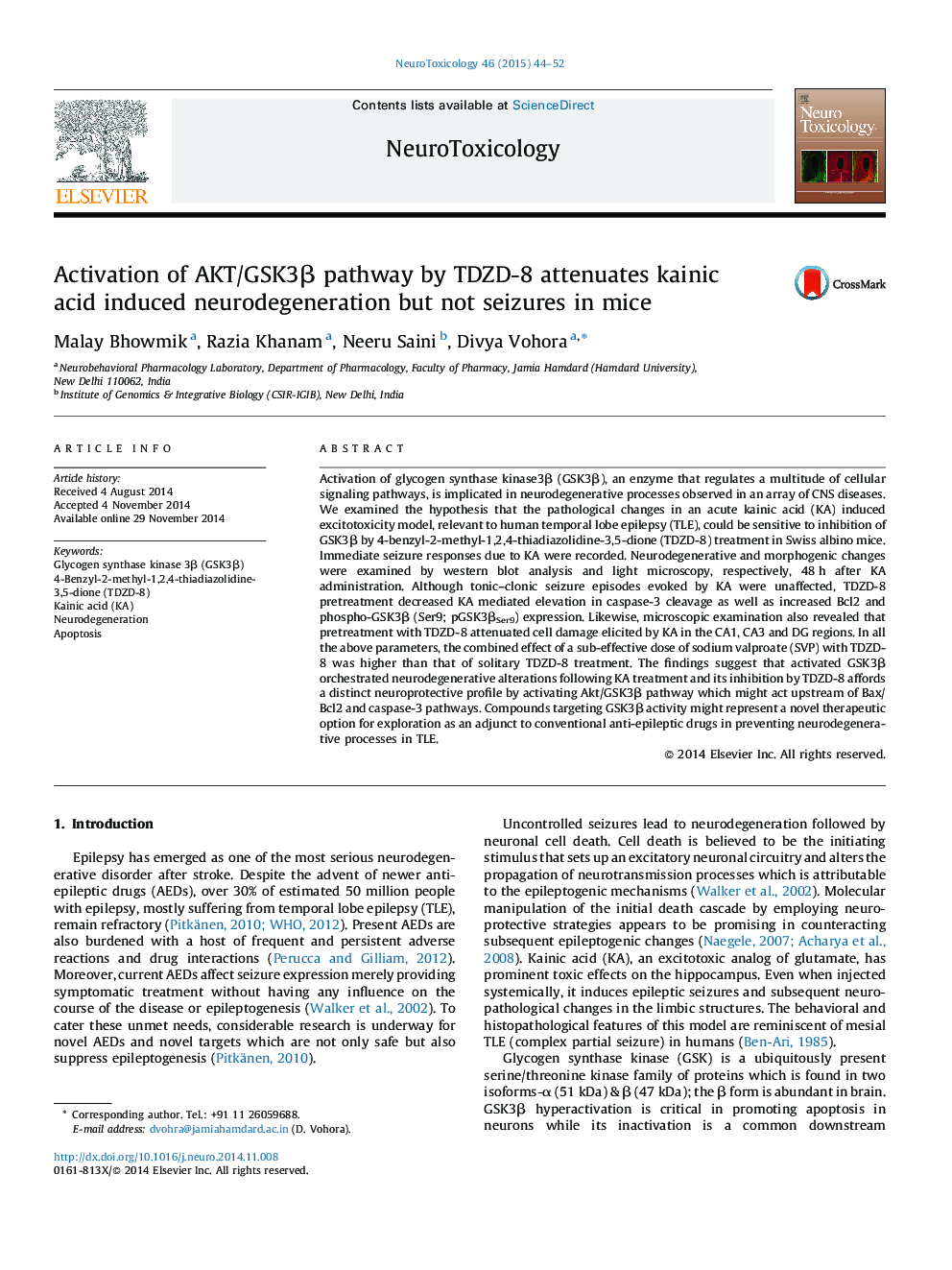| Article ID | Journal | Published Year | Pages | File Type |
|---|---|---|---|---|
| 2589601 | NeuroToxicology | 2015 | 9 Pages |
•Inhibiting GSK3β during kainate excitotoxicity was studied in Swiss albino mice.•TDZD-8, a selective GSK3β inhibitor, failed to influence KA-induced seizures.•It effectively reduced KA-induced structural damage of hippocampal neurons.•It favorably altered Bcl2, Bax, cleaved caspase-3, pAktSer473 and pGSK3βSer9 content.•Its efficacy was enhanced when given with sub-effective dose of sodium valproate.
Activation of glycogen synthase kinase3β (GSK3β), an enzyme that regulates a multitude of cellular signaling pathways, is implicated in neurodegenerative processes observed in an array of CNS diseases. We examined the hypothesis that the pathological changes in an acute kainic acid (KA) induced excitotoxicity model, relevant to human temporal lobe epilepsy (TLE), could be sensitive to inhibition of GSK3β by 4-benzyl-2-methyl-1,2,4-thiadiazolidine-3,5-dione (TDZD-8) treatment in Swiss albino mice. Immediate seizure responses due to KA were recorded. Neurodegenerative and morphogenic changes were examined by western blot analysis and light microscopy, respectively, 48 h after KA administration. Although tonic–clonic seizure episodes evoked by KA were unaffected, TDZD-8 pretreatment decreased KA mediated elevation in caspase-3 cleavage as well as increased Bcl2 and phospho-GSK3β (Ser9; pGSK3βSer9) expression. Likewise, microscopic examination also revealed that pretreatment with TDZD-8 attenuated cell damage elicited by KA in the CA1, CA3 and DG regions. In all the above parameters, the combined effect of a sub-effective dose of sodium valproate (SVP) with TDZD-8 was higher than that of solitary TDZD-8 treatment. The findings suggest that activated GSK3β orchestrated neurodegenerative alterations following KA treatment and its inhibition by TDZD-8 affords a distinct neuroprotective profile by activating Akt/GSK3β pathway which might act upstream of Bax/Bcl2 and caspase-3 pathways. Compounds targeting GSK3β activity might represent a novel therapeutic option for exploration as an adjunct to conventional anti-epileptic drugs in preventing neurodegenerative processes in TLE.
Graphical abstractFigure optionsDownload full-size imageDownload high-quality image (203 K)Download as PowerPoint slide
